The film La hora de los hornos (The Hour of the Furnaces, 1968), a Third Cinema manifesto against neocolonialism, has a brilliant installation specification.1 A banner was to be hung at every screening with text reading: “Every spectator is either a coward or a traitor.”2 It was intended to break down the distinctions between filmmaker and audience, author and producer, and thus create a sphere of political action. And where was this film shown? In factories, of course.
Now, political films are no longer shown in factories.3 They are shown in the museum, or the gallery—the art space. That is, in any sort of white cube.4
How did this happen? First of all, the traditional Fordist factory is, for the most part, gone.5 It’s been emptied out, machines packed up and shipped off to China. Former workers have been retrained for further retraining, or become software programmers and started working from home. Secondly, the cinema has been transformed almost as dramatically as the factory. It’s been multiplexed, digitized, and sequelized, as well as rapidly commercialized as neoliberalism became hegemonic in its reach and influence. Before cinema’s recent demise, political films sought refuge elsewhere. Their return to cinematic space is rather recent, and the cinema was never the space for formally more experimental works. Now, political and experimental films alike are shown in black boxes set within white cubes—in fortresses, bunkers, docks, and former churches. The sound is almost always awful.
But terrible projections and dismal installation notwithstanding, these works catalyze surprising desire. Crowds of people can be seen bending and crouching in order to catch glimpses of political cinema and video art. Is this audience sick of media monopolies? Are they trying to find answers to the obvious crisis of everything? And why should they be looking for these answers in art spaces?
Afraid of the Real?
The conservative response to the exodus of political films (or video installations) to the museum is to assume that they are thus losing relevance. It deplores their internment in the bourgeois ivory tower of high culture. The works are thought to be isolated inside this elitist cordon sanitaire—sanitized, sequestered, cut off from “reality.” Indeed, Jean-Luc Godard reportedly said that video installation artists shouldn’t be “afraid of reality,” assuming of course that they in fact were.6
Where is reality then? Out there, beyond the white cube and its display technologies? How about inverting this claim, somewhat polemically, to assert that the white cube is in fact the Real with a capital R: the blank horror and emptiness of the bourgeois interior.
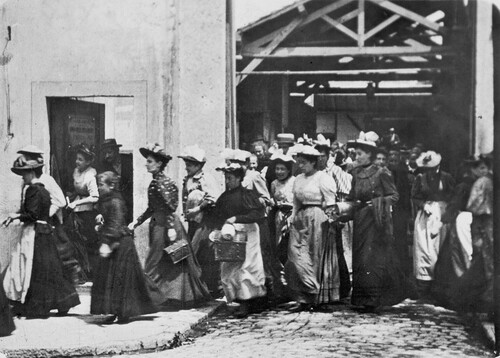

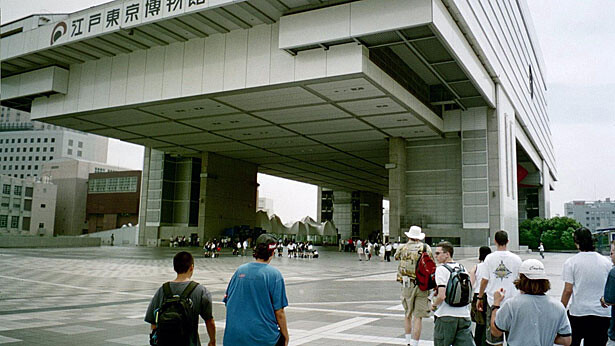

On the other hand—and in a much more optimistic vein—there is no need to have recourse to Lacan in order to contest Godard’s accusation. This is because the displacement from factory to museum never took place. In reality, political films are very often screened in the exact same place as they always were: in former factories, which are today, more often than not, museums. A gallery, an art space, a white cube with abysmal sound isolation. Which will certainly show political films. But which also has become a hotbed of contemporary production. Of images, jargon, lifestyles, and values. Of exhibition value, speculation value, and cult value. Of entertainment plus gravitas. Or of aura minus distance. A flagship store of Cultural Industries, staffed by eager interns who work for free.
A factory, so to speak, but a different one. It is still a space for production, still a space of exploitation and even of political screenings. It is a space of physical meeting and sometimes even common discussion. At the same time, it has changed almost beyond recognition. So what sort of factory is this?
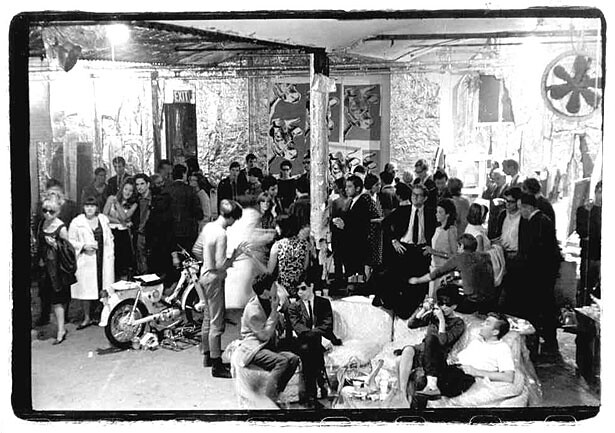

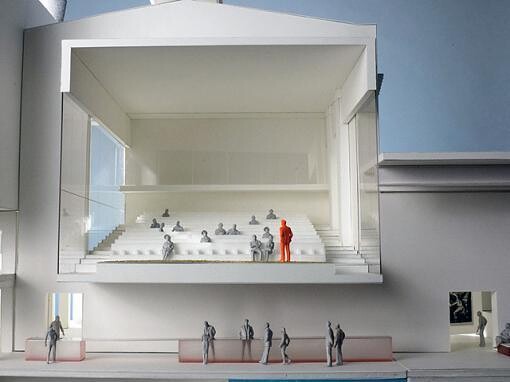

Productive Turn
The typical setup of the museum-as-factory looks like this. Before: an industrial workplace. Now: people spending their leisure time in front of TV monitors. Before: people working in these factories. Now: people working at home in front of computer monitors.
Andy Warhol’s Factory served as model for the new museum in its productive turn towards being a “social factory.”7 By now, descriptions of the social factory abound.8 It exceeds its traditional boundaries and spills over into almost everything else. It pervades bedrooms and dreams alike, as well as perception, affection, and attention. It transforms everything it touches into culture, if not art. It is an a-factory, which produces affect as effect. It integrates intimacy, eccentricity, and other formally unofficial forms of creation. Private and public spheres get entangled in a blurred zone of hyper-production.
In the museum-as-factory, something continues to be produced. Installation, planning, carpentry, viewing, discussing, maintenance, betting on rising values, and networking alternate in cycles. An art space is a factory, which is simultaneously a supermarket—a casino and a place of worship whose reproductive work is performed by cleaning ladies and cellphone-video bloggers alike.
In this economy, even spectators are transformed into workers. As Jonathan Beller argues, cinema and its derivatives (television, Internet, and so on) are factories, in which spectators work. Now, “to look is to labor.”9 Cinema, which integrated the logic of Taylorist production and the conveyor belt, now spreads the factory wherever it travels. But this type of production is much more intensive than the industrial one. The senses are drafted into production, the media capitalize upon the aesthetic faculties and imaginary practices of viewers.10 In that sense, any space that integrates cinema and its successors has now become a factory, and this obviously includes the museum. While in the history of political filmmaking the factory became a cinema, cinema now turns museum spaces back into factories.
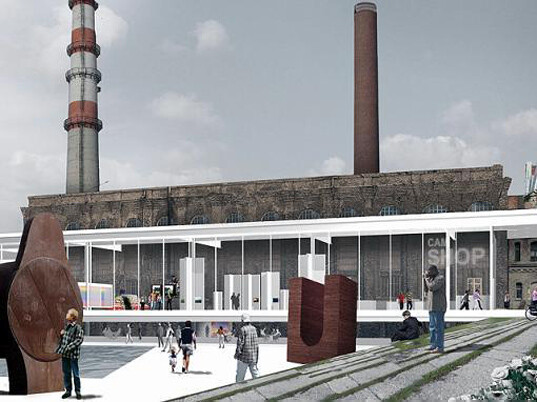

Workers Leaving the Factory
It is quite curious that the first films ever made by Louis Lumière show workers leaving the factory. At the beginning of cinema, workers leave the industrial workplace. The invention of cinema thus symbolically marks the start of the exodus of workers from industrial modes of production. But even if they leave the factory building, it doesn’t mean that they have left labor behind. Rather, they take it along with them and disperse it into every sector of life.
A brilliant installation by Harun Farocki makes clear where the workers leaving the factory are headed. Farocki collected and installed different cinematic versions of Workers Leaving the Factory, from the original silent version(s) by Louis Lumière to contemporary surveillance footage.11 Workers are streaming out of factories on several monitors simultaneously: from different eras and in different cinematic styles.12 But where are these workers streaming to? Into the art space, where the work is installed.
Not only is Farocki’s Workers Leaving the Factory, on the level of content, a wonderful archaeology of the (non)representation of labor; on the level of form it points to the spilling over of the factory into the art space. Workers who left the factory have ended up inside another one: the museum.
It might even be the same factory. Because the former Lumière factory, whose gates are portrayed in the original Workers Leaving The Lumière Factory is today just that: a museum of cinema.13 In 1995, the ruin of the former factory was declared a historical monument and developed into a site of culture. The Lumière factory, which used to produce photographic film, is today a cinema with a reception space to be rented by companies: “a location loaded with history and emotion for your brunches, cocktails and dinners.”14 The workers who left the factory in 1895 have today been recaptured on the screen of the cinema within the same space. They only left the factory to reemerge as a spectacle inside it.
As workers exit the factory, the space they enter is one of cinema and cultural industry, producing emotion and attention. How do its spectators look inside this new factory?
Cinema and Factory
At this point, a decisive difference emerges between classical cinema and the museum. While the classical space of cinema resembles the space of the industrial factory, the museum corresponds to the dispersed space of the social factory. Both cinema and Fordist factory are organized as locations of confinement, arrest, and temporal control. Imagine: Workers leaving the factory. Spectators leaving the cinema—a similar mass, disciplined and controlled in time, assembled and released at regular intervals. As the traditional factory arrests its workers, the cinema arrests the spectator. Both are disciplinary spaces and spaces of confinement.15
But now imagine: Workers leaving the factory. Spectators trickling out of the museum (or even queuing to get in). An entirely different constellation of time and space. This second crowd is not a mass, but a multitude.16 The museum doesn’t organize a coherent crowd of people. People are dispersed in time and space—a silent crowd, immersed and atomized, struggling between passivity and overstimulation.
This spatial transformation is reflected by the format of many newer cinematic works. Whereas traditional cinematic works are single-channel, focusing the gaze and organizing time, many of the newer works explode into space. While the traditional cinema setup works from a single central perspective, multi-screen projections create a multifocal space. While cinema is a mass medium, multi-screen installations address a multitude spread out in space, connected only by distraction, separation, and difference.17
The difference between mass and multitude arises on the line between confinement and dispersion, between homogeneity and multiplicity, between cinema space and museum installation space. This is a very important distinction, because it will also affect the question of the museum as public space.
Public Space
It is obvious that the space of the factory is traditionally more or less invisible in public. Its visibility is policed, and surveillance produces a one-way gaze. Paradoxically, a museum is not so different. In a lucid 1972 interview Godard pointed out that, because filming is prohibited in factories, museums, and airports, effectively 80% of productive activity in France is rendered invisible: “The exploiter doesn’t show the exploitation to the exploited.”18 This still applies today, if for different reasons. Museums prohibit filming or charge exorbitant shooting fees.19 Just as the work performed in the factory cannot be shown outside it, most of the works on display in a museum cannot be shown outside its walls. A paradoxical situation arises: a museum predicated on producing and marketing visibility can itself not be shown—the labor performed there is just as publicly invisible as that of any sausage factory.
This extreme control over visibility sits rather uncomfortably alongside the perception of the museum as a public space. What does this invisibility then say about the contemporary museum as a public space? And how does the inclusion of cinematic works complicate this picture?
The current discussion of cinema and the museum as public sphere is an animated one. Thomas Elsaesser, for example, asks whether cinema in the museum might constitute the last remaining bourgeois public sphere.20 Jürgen Habermas outlined the conditions in this arena in which people speak in turn and others respond, all participating together in the same rational, equal, and transparent discourse surrounding public matters.21 In actuality, the contemporary museum is more like a cacophony—installations blare simultaneously while nobody listens. To make matters worse, the time-based mode of many cinematic installation works precludes a truly shared discourse around them; if works are too long, spectators will simply desert them. What would be seen as an act of betrayal in a cinema—leaving the projection while it lasts—becomes standard behavior in any spatial installation situation. In the installation space of the museum, spectators indeed become traitors—traitors of cinematic duration itself. In circulating through the space, spectators are actively montaging, zapping, combining fragments—effectively co-curating the show. Rationally conversing about shared impressions then becomes next to impossible. A bourgeois public sphere? Instead of its ideal manifestation, the contemporary museum rather represents its unfulfilled reality.




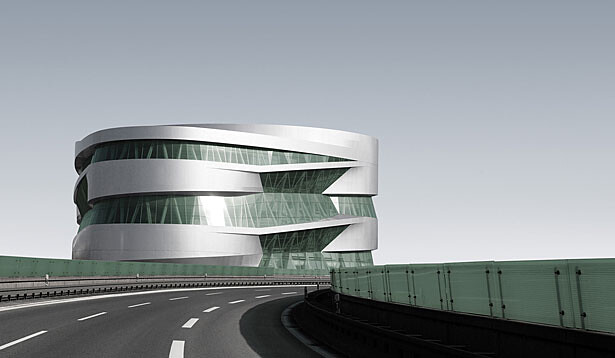

Sovereign Subjects
In his choice of words, Elsaesser also addresses a less democratic dimension of this space. By, as he dramatically phrases it, arresting cinema—suspending it, suspending its license, or even holding it under a suspended sentence—cinema is preserved at its own expense when it is taken into “protective custody.”22 Protective custody is no simple arrest. It refers to a state of exception or (at least) a temporal suspension of legality that allows the suspension of the law itself. This state of exception is also addressed in Boris Groys’ essay “Politics of Installation.”23 Harking back to Carl Schmitt, Groys assigns the role of sovereign to the artist who—in a state of exception—violently establishes his own law by “arresting” a space in the form of an installation. The artist then assumes a role as sovereign founder of the exhibition’s public sphere.
At first glance, this repeats the old myth of artist as crazy genius, or more precisely, as petty-bourgeois dictator. But the point is: if this works well as an artistic mode of production, it becomes standard practice in any social factory. So then, how about the idea that inside the museum, almost everybody tries to behave like a sovereign (or petty-bourgeois dictator)? After all, the multitude inside museums is composed of competing sovereigns: curators, spectators, artists, critics.
Let’s have a closer look at the spectator-as-sovereign. In judging an exhibition, many attempt to assume the compromised sovereignty of the traditional bourgeois subject, who aims to (re)master the show, to tame the unruly multiplicity of its meanings, to pronounce a verdict, and to assign value. But, unfortunately, cinematic duration makes this subject position unavailable. It reduces all parties involved to the role of workers—unable to gain an overview of the whole process of production. Many—primarily critics—are thus frustrated by archival shows and their abundance of cinematic time. Remember the vitriolic attacks on the length of films and video in Documenta 11? To multiply cinematic duration means to blow apart the vantage point of sovereign judgment. It also makes it impossible to reconfigure yourself as its subject. Cinema in the museum renders overview, review, and survey impossible. Partial impressions dominate the picture. The true labor of spectatorship can no longer be ignored by casting oneself as master of judgment. Under these circumstances, a transparent, informed, inclusive discourse becomes difficult, if not impossible.
The question of cinema makes clear that the museum is not a public sphere, but rather places its consistent lack on display—it makes this lack public, so to speak. Instead of filling this space, it conserves its absence. But it also simultaneously displays its potential and the desire for something to be realized in its place.
As a multitude, the public operates under the condition of partial invisibility, incomplete access, fragmented realities—of commodification within clandestinity. Transparency, overview, and the sovereign gaze cloud over to become opaque. Cinema itself explodes into multiplicity—into spatially dispersed multi-screen arrangements that cannot be contained by a single point of view. The full picture, so to speak, remains unavailable. There is always something missing—people miss parts of the screening, the sound doesn’t work, the screen itself or any vantage point from which it could be seen are missing.
Rupture
Without notice, the question of political cinema has been inverted. What began as a discussion of political cinema in the museum has turned into a question of cinematic politics in a factory. Traditionally, political cinema was meant to educate—it was an instrumental effort at “representation” in order to achieve its effects in “reality.” It was measured in terms of efficiency, of revolutionary revelation, of gains in consciousness, or as potential triggers of action.
Today, cinematic politics are post-representational. They do not educate the crowd, but produce it. They articulate the crowd in space and in time. They submerge it in partial invisibility and then orchestrate their dispersion, movement, and reconfiguration. They organize the crowd without preaching to it. They replace the gaze of the bourgeois sovereign spectator of the white cube with the incomplete, obscured, fractured, and overwhelmed vision of the spectator-as-laborer.
But there is one aspect that goes well beyond this. What else is missing from these cinematic installations?24 Let’s return to the liminal case of Documenta 11, which was said to contain more cinematic material than could be seen by a single person in the 100 days that the exhibition was open to the public. No single spectator could even claim to have even seen everything, much less to have exhausted the meanings in this volume of work. It is obvious what is missing from this arrangement: since no single spectator can possibly make sense of such a volume of work, it calls for a multiplicity of spectators. In fact, the exhibition could only be seen by a multiplicity of gazes and points of view, which then supplements the impressions of others. Only if the night guards and various spectators worked together in shifts could the cinematic material of d11 be viewed. But in order to understand what (and how) they are watching, they must meet to make sense of it. This shared activity is completely different from that of spectators narcissistically gazing at themselves and each other inside exhibitions—it does not simply ignore the artwork (or treat it as mere pretext), but takes it to another level.
Cinema inside the museum thus calls for a multiple gaze, which is no longer collective, but common, which is incomplete, but in process, which is distracted and singular, but can be edited into various sequences and combinations. This gaze is no longer the gaze of the individual sovereign master, nor, more precisely, of the self-deluded sovereign (even if “just for one day,” as David Bowie sang). It isn’t even a product of common labor, but focuses its point of rupture on the paradigm of productivity. The museum-as-factory and its cinematic politics interpellate this missing, multiple subject. But by displaying its absence and its lack, they simultaneously activate a desire for this subject.
Cinematic Politics
But does this now mean that all cinematic works have become political? Or, rather, is there still any difference between different forms of cinematic politics? The answer is simple. Any conventional cinematic work will try to reproduce the existing setup: a projection of a public, which is not public after all, and in which participation and exploitation become indistinguishable. But a political cinematic articulation might try to come up with something completely different.
What else is desperately missing from the museum-as-factory? An exit. If the factory is everywhere, then there is no longer a gate by which to leave it—there is no way to escape relentless productivity. Political cinema could then become the screen through which people could leave the museum-as-social-factory. But on which screen could this exit take place? On the one that is currently missing, of course.
Grupo Cine Liberación (Fernando E. Solanas, Octavio Getino), Argentina, 1968. The work is one of the most important films of Third Cinema.
A quote from Frantz Fanon’s The Wretched of the Earth. The film was of course banned and had to be shown clandestinely.
Or videos or video/film installations. To properly make the distinctions (which exist and are important) would require another text.
I am aware of the problem of treating all these spaces as similar.
At least in Western countries.
The context of Godard’s comment is a conversation—a monologue, apparently—with young installation artists, whom he reprimands for their use of what he calls technological dispositifs in exhibitions. See “Debrief de conversations avec Jean-Luc Godard,” the Sans casser des briques blog, March 10, 2009, →.
See Brian Holmes, “Warhol in the Rising Sun: Art, Subcultures and Semiotic Production,” 16 Beaver ARTicles, August 8, 2004, →.
Sabeth Buchmann quotes Hardt and Negri: “The ‘social factory’ is a form of production which touches on and penetrates every sphere and aspect of public and private life, of knowledge production and communication,” in “From Systems-Oriented Art to Biopolitical Art Practice,” NODE.London, →.
Jonathan L. Beller, “Kino-I, Kino-World,” in The Visual Culture Reader, ed. Nicholas Mirzoeff (London and New York: Routledge, 2002), 61.
Ibid., 67.
For a great essay about this work see Harun Farocki, “Workers Leaving the Factory,” in Nachdruck/Imprint: Texte/Writings, trans. Laurent Faasch-Ibrahim (Berlin: Verlag Vorwerk, New York: Lukas & Sternberg, 2001), reprinted on the Senses of Cinema Web site, →.
My description refers to the Generali Foundation show‚“Kino wie noch nie” (2005). See →.
“Aujourd’hui le décor du premier film est sauvé et abrite une salle de cinéma de 270 fauteuils. Là où sortirent les ouvriers et les ouvrières de l’usine, les spectateurs vont au cinéma, sur le lieu de son invention,” Institut Lumière.
“La partie Hangar, spacieux hall de réception chargé d’histoire et d’émotion pour tous vos déjeuners, cocktail, dîners…(Formule assise 250 personnes ou formule debout jusqu’à 300 personnes),” Institut Lumière.
There is however one interesting difference between cinema and factory: in the rebuilt scenery of the Lumière museum, the opening of the former gate is now blocked by a transparent glass pane to indicate the framing of the early film. Leaving spectators have to go around this obstacle, and leave through the former location of the gate itself, which no longer exists. Thus, the current situation is like a negative of the former one: people are blocked by the former opening, which has now turned into a glass screen; they have to exit through the former walls of the factory, which have now partly vanished. See photographs at ibid.
For a more sober description of the generally quite idealized condition of multitude, see Paolo Virno A Grammar of the Multitude, trans. Isabella Bertoletti, James Cascaito, and Andrea Casson (New York and Los Angeles: Semiotexte, 2004).
As do multiple single screen arrangements.
“Godard on Tout va bien (1972),” →.
“Photography and video filming are not normally allowed at Tate” (→). However, filming there is welcomed on a commercial basis, with location fees starting at £200 an hour (→). Policy at the Centre Pompidou is more confusing: “You may film or photograph works from permanent collections (which you will find on levels 4 and 5 and in the Atelier Brancusi) for your own personal use. You may not, however, photograph or film works that have a red dot, and you may not use a flash or stand.” (→).
Thomas Elsaesser, “The Cinema in the Museum: Our Last Bourgeois Public Sphere?“ (paper presented at the International Film Studies Conference, “Perspectives on the Public Sphere: Cinematic Configurations of ‘I’ and ‘We,’” Berlin, Germany, April 23–25, 2009.
Jürgen Habermas, The Structural Transformation of the Public Sphere: An Inquiry into a Category of Bourgeois Society, trans. Thomas Burger with the assistance of Frederick Lawrence (Cambridge, MA: The MIT Press, [1962] 1991).
Elsaesser, “The Cinema in the Museum.”
Boris Groys, “Politics of Installation,” e-flux journal, no. 2 (January 2009), →.
A good example would be “Democracies” by Artur Żmijewski, an un-synchronized multi-screen installation with trillions of possibilities of screen-content combinations.

